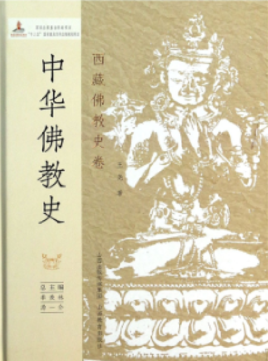
. > WHAT'S NEW > BOOKS
A History of Buddhism in China
Author : Guo Wenli,Liu Ji’an Source : Chinese Social Sciences Today 2014-12-12

A History of Buddhism in China
Publisher: Shanxi Education Press
Study marks milestone for Buddhist history
By Guo Wenli and Liu Ji’an
An 11-volume survey of Buddhist history in China was published in May 2014 after 15 years of hard work by a group of experts in the field headed by renowned Chinese scholars Ji Xianlin and Tang Yijie.
A History of Buddhism in China was funded by the National Publication Foundation, and it is also part of the 12th Five-Year National Key Publishing planning project. Scholars said A History of Buddhism in China is a milestone in the study of Buddhist history, with its innovative writing style, insightful ideas and grand academic vision.
The compilation of A History of Buddhism in China started in 1999. The tireless efforts of Ji and Tang ensured the quality of the work. Ji called upon friends to scour Japan and India to find documents on Buddhist history, and he completed 50,000 writings from a hospital bed.
His dedication and perseverance inspired all scholars in the editorial committee to generate better work. A History of Buddhism in China demonstrates their confidence in academics as well as Chinese culture.
The book is not a simple compilation of existing materials, but rather it breaks the rules by putting forwards new ideas. As Ji said in the preface: “The name of the 11-volume survey of Buddhist history in Chinese is Zhong Hua Fo Jiao Shi . It is intended to correct the old habits of recording only Han history. The volumes are the voices of all ethnic groups with Buddhist beliefs in China.”
In addition to writing on Buddhist history in Han and other ethnic communities in China, it includes the development of Buddhism in Japan and Korea. In terms of content, it not only depicts the development of Buddhism, also focuses on Buddhist art, literature and influence on national culture.
This innovative writing style makes the book more scientific and understandable while better reflecting the panorama of Chinese Buddhism as well as the patterns and characteristics that have defined it for more than 2,000 years of development.
Unlike works on Buddhist history that have been arranged according to chronological order, A History of Buddhism in China adopts an organizational structure that integrates timeline and theme. It provides a broader vision for the study of Buddhist history through writings that originate in periods stretching from the Han, Wei, Jin, and Southern and Northern dynasties to modern times. Other sections create new possibilities for interdisciplinary studies with organization according to themes, such as Buddhist literature, art, Hinayana Buddhism, Tibetan Buddhism and the history of cultural exchange.
The book puts an emphasis on research and publishes many first-hand materials. Ji said that the research on Buddhist history in China has both academic meaning and practical significance because Buddhism is still active in China. The study of Buddhist history can help believers and non-believers alike to better understand the essence of the religion and its implications for social harmony.
In conclusion, the book breaks the boundaries of disciplines and produces a synergy of Buddhism, philosophy, aesthetics, history, folklore, archaeology, anthropology and literature. It includes general studies of Chinese Buddhism and primitive Buddhism as well as 50 years of field investigations and research.
Guo Wenli and Liu Ji’an are from the Shanxi Education Press.
Translated by Yang Xue
Ye Shengtao made Chinese fairy tales from a wilderness
Ye Shengtao (1894–1988) created the first collection of fairy tales in the history of Chinese children’s literature...
-
How northern ethnicities integrated into Chinese nation
2023-09-18
-
Mogao caves
2023-09-12
-
Mogao Grottoes as ‘a place of pilgrimage’
2023-09-12
-
Time-honored architectural traditions in China
2023-08-29
-
Disentangling the civilizational evolution of China
2023-08-28
-
AI ethics in science fiction
2023-08-23













 2011-2013 by www.cssn.cn. All Rights Reserved
2011-2013 by www.cssn.cn. All Rights Reserved